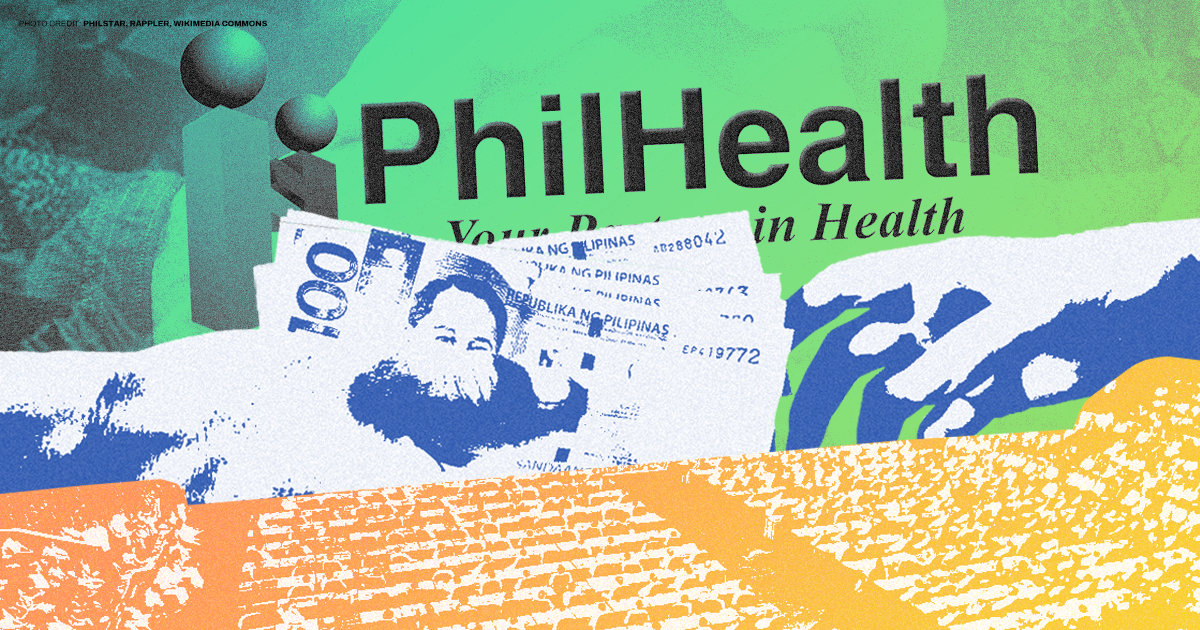The recent news of the Php89 billion transfer of PhilHealth’s excess funds to the central treasury has caused another public uproar against the state insurance corporation. Several medical groups have urged the Marcos Jr administration to return the unused funds and channel these to expand the health benefits that PhilHealth provides.
In a special Senate hearing, Department of Finance (DOF) Secretary Ralph Recto, who issued the memorandum for the transfer, and Marcos Jr-appointed PhilHealth President Mandy Ledesma stood by the legality of the fund transfer. They insisted that they were adhering to the principles of effective financial management, that these excess funds will be used for projects under the Unprogrammed Appropriations that will help boost economic growth by 0.7% and create hundreds of thousands of jobs.
The DOF and Department of Budget and Management (DBM) secretaries later revealed that PhilHealth had already remitted Php20 billion of the excess funds to the treasury, despite a public petition to block the transfer that had already been filed with the Supreme Court. The transfer was allegedly used for the Health Emergency Allowance (HEA) benefit of healthcare workers, which Pres. Marcos flagged as urgent for release. The remaining Php70 billion will be transferred in tranches in the coming months.
The DOF further revealed that PhilHealth has more than Php550 billion in its coffers, more than enough to increase health benefits for the next two or three years. The state agency is also expecting Php61.8 billion in net income by the end of 2024. Despite its already abundant funds and numerous complaints by members, PhilHealth is also pushing through with a premium rate hike for its members. To top it all, the PhilHealth will receive a subsidy increase in the 2025 national budget while the budgets for indigent assistance and health infrastructure programs under the Department of Health (DOH) will be cut to a huge extent.
Why is the Marcos Jr government maneuvering to centralize PhilHealth’s robust funds when ordinary Filipinos – the PhilHealth members and sponsored indigents – are receiving less and less health services? This is unraveling to be just one of the many ironies in the Marcos Jr government’s optimistic portrayal of the national situation.
Where is the money?
Direct contributions to PhilHealth are composed of the premiums of formal employees in the private and public sectors, overseas Filipino workers (OFWs), and the self-employed. Members are obliged to pay a monthly premium based on their income, which could range from Ph500 to Php5,000. In 2023, total direct contributions reached Php158.3 billion – 15% higher than the Php136.7 billion collected in 2022.
On the other hand, indirect contributions to PhilHealth are paid through the national government subsidy and the contributions of other agencies such as local government units (LGUs) and non-government agencies (NGAs). Members classified as indirect contributors are the indigents and those listed in the National Household Targeting System for Poverty Reduction (NHTS-PR), senior citizens, and other sponsored members. In 2023, indirect contributions totaled Php78.8 billion, slightly less than the Php80 billion subsidy from 2022.
PhilHealth pools both direct and indirect contributions to purchase the needed health services of the beneficiaries. The contested transferred funds are accumulated national government subsidies received by PhilHealth in the past few years, which are presumably unused. These are intended to pay for the benefit claims of indigent patients and sponsored members. Taking away “unused” government subsidies will deplete the funds pool and pass on the burden of paying for health services to the direct contributors.
PhilHealth also has an impressive investment portfolio. During the Senate hearing, the state insurance agency revealed that it has Php463.7 billion in reserve funds. These are accumulated revenues not used for the current year’s expenditures and can be used to invest in different types of interest-bearing bonds and stocks. Using these reserved funds, PhilHealth invested in government treasury bills and corporate bonds such as SM Prime Holdings, Robinson Land, and Development Bank of the Philippines (DBP). PhilHealth also has more than Php500 billion worth of assets, tripling since 2018 despite the onslaught of COVID-19 in 2020 and 2021.
The government may argue that PhilHealth is precisely established to earn like finance capital, utilizing members’ premiums to invest in interest-earning financial instruments, presumably to provide universal health coverage. The Marcos Jr government uses the same principle in raising subsidies to the insurance corporation while cutting the budget for direct health services. But PhilHealth’s performance in fulfilling its health mandate has remained lackluster, leading the public to continually question where the funds have gone.
We ask again, where is the money?
Despite its increasing funds, PhilHealth’s spending on health services is decreasing. In the 2023 Philippine National Health Accounts (PNHA), the social health insurance agency recorded only a 10.2% share in the current health expenditure (CHE), declining from the 13.5% in 2022 and 17.4% in 2019.
Meanwhile, patients’ out-of-pocket (OOP) spending remained high at 44.4% share in 2023. Though the OOP share has decreased since 2019, it is still the highest contributor of CHE. Under the universal health care (UHC) financing strategy, the government’s target is for the OOP share to decrease to 35% and for PhilHealth to become the major contributor to CHE by 2020 – which still has not been achieved four years after the passage of the UHC Law.
PhilHealth supposedly has benefit programs to cater to the people’s health needs. These include case rate packages for selected inpatient and outpatient care; cardiovascular diseases; Z-Benefits for terminal illnesses such as cancer; and the No Balance Billing policy for indigent patients with no capacity to pay for their health needs.
But the effective utilization of these benefits is wanting. In fact, like its share in the CHE, PhilHealth’s paid claims in the benefit programs continue to decline. In 2023, PhilHealth reportedly paid Php122.4 billion for 12.7 million claims. These figures are lower than the Php129.6 billion for the 13.9 million claims in 2022, considering that the population coverage has grown.
A study by the Philippine Institute of Development Studies (PIDS) showed that PhilHealth’s support value, or the amount it covers of the total hospital cost, was only 56 percent. The 2023 PNHA also recorded that on average every Filipino has spent Php11,083 for health care, an increase of 8.3% from Php10,238 in 2022.
Thus, how is it that PhilHealth still has accumulated excess funds while the majority of Filipinos are spending more and more on healthcare out of their own pockets?
Spend for public health
There will be no end to the controversies beleaguering PhilHealth as long as the state subjects a basic human right and social responsibility, such as public health, to financialization. These controversies will persist as the government glaringly neglects the provision of direct health services in favor of profit-seeking social health insurance.
Until now and after the adoption of a UHC framework, only half of the more than 40,000 barangays in the country have Barangay Health Stations (BHS) and only half of the population have access to a Rural Health Unit (RHU) within 30 minutes. Of total deaths in the country, 48% were unattended by any health care provider – 14 regions have more unattended deaths than attended deaths. More than half of recorded deaths happened at home, and only 41.4% were in health facilities.
The social health insurance system also thrives on the government’s health privatization thrust and thus fails in protecting the population from catastrophic health spending. The cost of health services is growing, especially in private hospitals which consist of 66% of the total hospitals in the country. The government is also not regulating the prices of health services and medicines. Yet, social health insurance covers only the least or base cost. For example, it was raised in the Senate hearing that the cost of an angiogram ranges from Php50,000 to Php70,000 in private hospitals, but PhilHealth’s case package for this only ranges from Php10,000 to Php20,000.
Several health practitioners and advocates have been calling for the abolishment of PhilHealth. There is indeed urgency in channeling people’s health funds into direct health services. This would be more beneficial if infused in building health infrastructure, augmenting the need for more advanced technology and equipment, increasing the compensation and benefits of health workers, and the advancement and promotion of primary health care.
The DOF, DBM, and PhilHealth have stood their ground on the legality of the fund transfer, but it is still inarguably immoral for the agency to keep huge funds (from people’s premiums and taxes at that) amid a worsening health system that limits people’s access to healthcare, and even results in preventable deaths. It’s time for progressive changes in the healthcare system that will truly achieve the people’s highest attainment of health and national development. It’s high time for the Marcos government to listen to science and conscience instead of holding on to its contrived bright outlook of the national situation. ###



